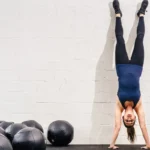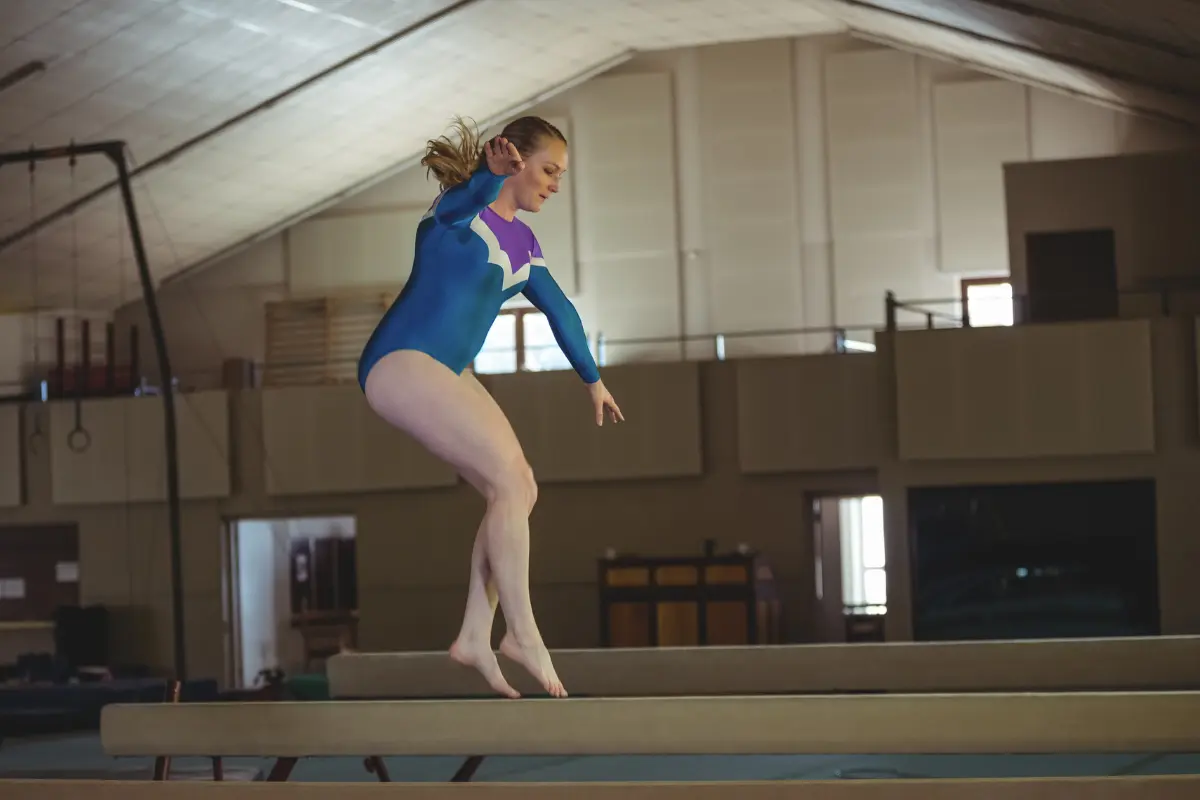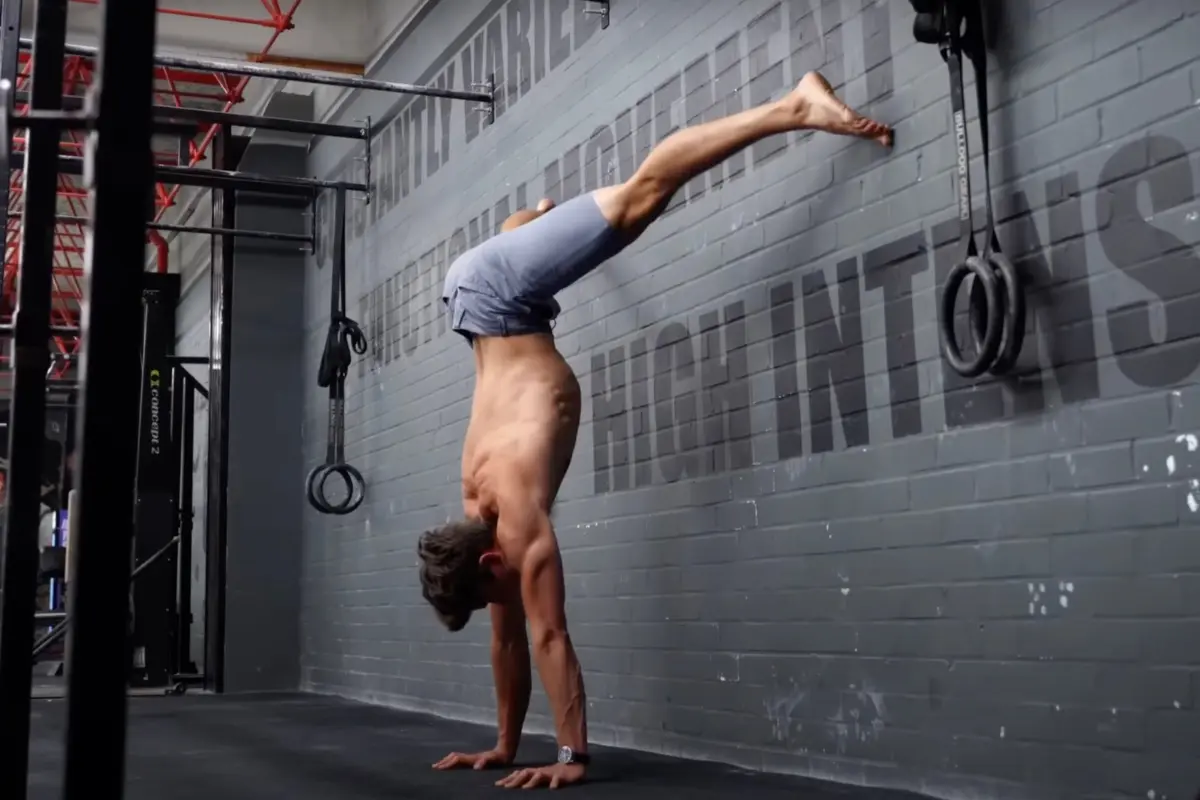Women’s gymnastics is one of the most physically demanding sports, and the injury stats prove it. According to NCAA injury surveillance, women’s gymnastics ranks among the most injury-prone sports at the collegiate level.
Here’s a closer look at the most frequent injuries in women’s gymnastics—and why they happen so often.
1. Ankles: Sprains, Instability, and Foot Fractures
Ankle injuries are the most common in women’s gymnastics, making up nearly one-third of all lower-body injuries in some studies.
Why It Happens
Gymnasts land with extreme force—8 to 14 times their body weight—multiple times in every practice and routine. The ankle takes the brunt of that load in just a fraction of a second.
Gymnasts typically land barefoot or in thin slippers, which offer little support. And since the sport rewards “stuck” landings (no steps or hops), gymnasts often try to freeze their landings, which puts even more stress on the ankle joint.
Even a slight inward roll of the foot can overstretch or tear ligaments. Over time, repeated small sprains can lead to chronic ankle instability or more serious injuries like stress fractures or joint cartilage damage.
Warning Signs
- Frequent ankle rolling
- Swelling or pain after landings
- Feeling of looseness or weakness in the joint
2. Achilles Tendon Rupture
The Achilles tendon is one of the most frequently torn tendons in women’s gymnastics, especially in college athletes. Gymnasts have the highest rate of Achilles ruptures of any NCAA sport—even more than basketball or soccer.
Why It Happens
Most tears occur during powerful takeoffs on floor routines. At that moment, the Achilles is rapidly loaded with force—up to 12 times body weight—in milliseconds. If it can’t withstand the load, it may rupture.
Today’s spring floors help gymnasts jump higher, but they also create stiffer landings and more pressure on the lower leg, especially early in the season when the tendon isn’t yet adapted to full routines.
Small tendon damage can build up unnoticed over time, especially in athletes who had heel pain or Sever’s disease during childhood, weakening the tendon and making rupture more likely.
Warning Signs
- Calf tightness or soreness, especially during jumps
- A sudden “pop” or snap at takeoff
- Difficulty pushing off or pointing the toes
3. Knees: ACL & Meniscus Tears
The knee is the second most commonly injured joint in women’s gymnastics. ACL tears and meniscus damage are serious injuries that often require surgery and long rehab.
Why It Happens
Blind landings—especially during beam dismounts or twisting floor passes—are a big risk. Without seeing the floor, gymnasts may land with inward-rotated knees, the exact posture that often tears the ACL.
Female gymnasts also tend to use their quadriceps more than their hamstrings during landings. This pattern increases forward force on the shin and makes the knee more likely to collapse inward.
Gymnasts are also expected to “stick” their landings. But this creates huge forces on the knee—up to 15 times body weight in less than 60 milliseconds, too fast for muscles to fully protect the joint. Ligaments and cartilage absorb the impact.
Finally, natural factors like hip structure, joint size, and hormone changes can increase ligament looseness and injury risk.
Warning Signs
- A loud “pop” or sharp pain during landing
- Swelling and trouble straightening the knee
- Pain with pivoting or twisting
- Locking or catching in the joint
4. Lumbar Spine Stress Injuries
Back pain is extremely common in gymnasts—some studies report that up to 85% experience it. A major cause is stress injury to the lower spine, especially the pars interarticularis, which can lead to stress fractures or vertebral slippage.
Why It Happens
Many gymnastics skills involve repeated back-bending—think layouts, giants on bars, and ring leaps. When performed hundreds of times per week, this motion can wear down the small bones in the lower back.
Young athletes are especially vulnerable because their spine is still developing and their bones are not fully hardened.
RED-S (Relative Energy Deficiency in Sport) can make the problem worse. If a gymnast isn’t eating enough to support training, her bones may become weaker and less able to recover from stress.
Warning Signs
- Aching or sharp pain in the low back
- Pain that worsens when arching
- Muscle tightness or reduced flexibility in the back
5. Wrist & Elbow Overuse
About 20% of all gymnastics injuries involve the upper limbs—mostly the wrist and elbow. Unlike other sports, gymnastics constantly loads the arms with body weight.
Why It Happens
Gymnasts put 1–2 times their body weight through their hands in nearly every session. Vaulting, bars, and handstands all generate strong impacts through small joints not built for repetitive high loads.
Young gymnasts are at greater risk because their growth plates (physes) are still open. These areas are softer and more vulnerable to injury from repetitive impact.
Two common overuse injuries include:
- Gymnast Wrist: A stress injury near the forearm growth plate. It causes swelling and pain and can affect bone growth if untreated.
- Capitellar OCD: A bone/cartilage injury in the elbow from repeated pressure during weight-bearing skills.
Warning Signs
- Pain during vault, bars, or handstands
- Swelling, stiffness, or clicking in the wrist or elbow
- Trouble fully extending or bending the elbow
6. Concussions & Cervical Sprain
Even though gymnastics isn’t a contact sport, concussions and neck sprains still happen—especially from falls on beam or bars. NCAA data shows that gymnastics has some of the highest concussion rates during preseason training.
Why It Happens
Beam and bars are elevated, and the margin for error is small. A missed hand or off-balance landing can send a gymnast falling onto her head or neck. Even with mats, the impact can be enough to cause a concussion or cervical injury.
In early season, gymnasts are also re-learning difficult skills after time off. Mistimed releases, short rotations, or missed landings increase head and neck risk.
Warning Signs
- Headache, nausea, or dizziness
- Trouble focusing or foggy thinking
- Neck pain or stiffness
- Poor balance or slowed reactions
Outlook
Injuries are common in women’s gymnastics, but they don’t have to be expected. With smart training, proper recovery, and early attention to warning signs, many injuries can be prevented or managed before they get worse. A strong body, a careful plan, and a supportive team can help gymnasts stay healthy and perform at their best.






